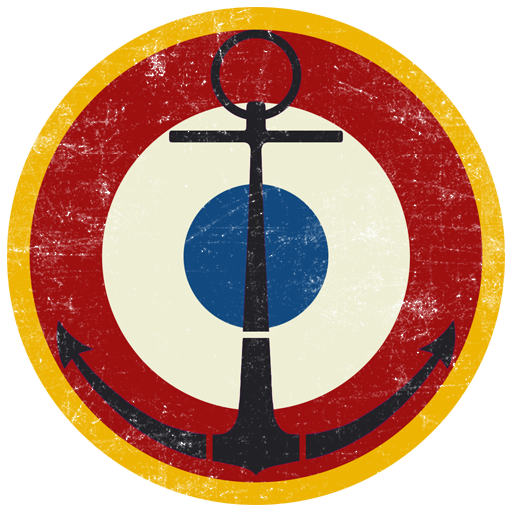
- For PC
- For MAC
- For Linux
- OS: Windows 7 SP1/8/10 (64 bit)
- Processor: Dual-Core 2.2 GHz
- Memory: 4GB
- Video Card: DirectX 10.1 level video card: AMD Radeon 77XX / NVIDIA GeForce GTX 660. The minimum supported resolution for the game is 720p.
- Network: Broadband Internet connection
- Hard Drive: 17 GB
- OS: Windows 10/11 (64 bit)
- Processor: Intel Core i5 or Ryzen 5 3600 and better
- Memory: 16 GB and more
- Video Card: DirectX 11 level video card or higher and drivers: Nvidia GeForce 1060 and higher, Radeon RX 570 and higher
- Network: Broadband Internet connection
- Hard Drive: 95 GB
- OS: Mac OS Big Sur 11.0 or newer
- Processor: Core i5, minimum 2.2GHz (Intel Xeon is not supported)
- Memory: 6 GB
- Video Card: Intel Iris Pro 5200 (Mac), or analog from AMD/Nvidia for Mac. Minimum supported resolution for the game is 720p with Metal support.
- Network: Broadband Internet connection
- Hard Drive: 17 GB
- OS: Mac OS Big Sur 11.0 or newer
- Processor: Core i7 (Intel Xeon is not supported)
- Memory: 8 GB
- Video Card: Radeon Vega II or higher with Metal support.
- Network: Broadband Internet connection
- Hard Drive: 95 GB
- OS: Most modern 64bit Linux distributions
- Processor: Dual-Core 2.4 GHz
- Memory: 4 GB
- Video Card: NVIDIA 660 with latest proprietary drivers (not older than 6 months) / similar AMD with latest proprietary drivers (not older than 6 months; the minimum supported resolution for the game is 720p) with Vulkan support.
- Network: Broadband Internet connection
- Hard Drive: 17 GB
- OS: Ubuntu 20.04 64bit
- Processor: Intel Core i7
- Memory: 16 GB
- Video Card: NVIDIA 1060 with latest proprietary drivers (not older than 6 months) / similar AMD (Radeon RX 570) with latest proprietary drivers (not older than 6 months) with Vulkan support.
- Network: Broadband Internet connection
- Hard Drive: 95 GB
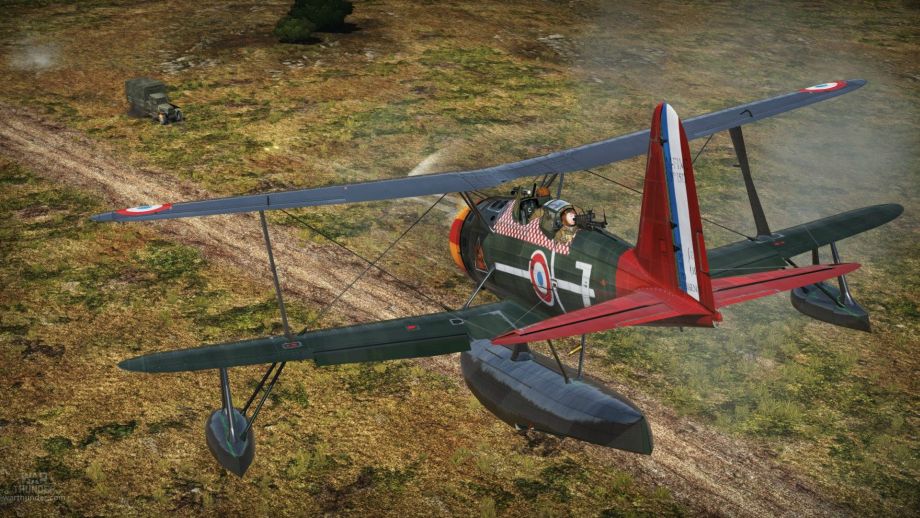
Beautiful skin for Vichy France F1M2 in French Indochina by Petranera
Formed in 1909, the French Armée de l'Air claims the title of the first air force in history. While not immediately an independent branch of the military, the original Aéronautique Militaire was a pioneer in using airplanes as a weapon of war.
During the First World War, France was one of the most advanced air powers in the world. French aviators scored the first air-to-air victory using an aircraft mounted machine gun as well as the first victory by a fighter firing a machine gun through the propeller. France also had the top scoring Allied ace of the war: René Fonck claimed a total of 72 solo victories flying different variants of SPAD fighters.
After peace in 1918, the French continued to develop their air power. The law to establish the Armée de l'Air as a separate branch of the military was finally passed on the 2nd of July 1934, exactly 80 years ago. As Germany began to remilitarize during the late 1930s, France and her allies were forced to compete with their neighbor in military equipment. By the Battle of France in May 1940, France and Britain together should have had an air force to match the Luftwaffe.
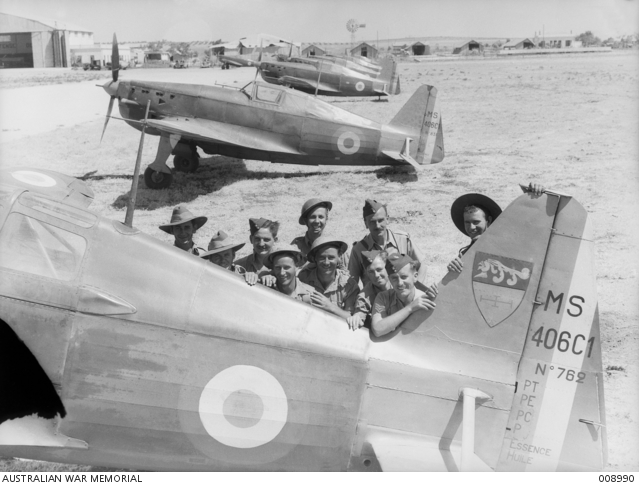 |
Australian troops with Morane-Saulnier MS.406C1 fighters of Groupe de Chasse I/7, Syria, in July 1941 |
When the Germans invaded, France was completely unprepared for Blitzkrieg. The Armée de l'Air was equipped with Curtiss H-75A Hawks, M.S.406s, and with some new D.520s and MB.150s, which should have been competitive against the German Bf 109s and Bf 110s. However, they could barely slow down the invaders. This was a result of several problems, such as underfunding, delays in modernization, severe rivalry between military branches, obsolete tactics and organizational problems, and being totally unprepared for the attack. The Luftwaffe could also field more and better aircraft than the Allies. Despite the circumstances, the Armée de l'Air fought back valiantly until France surrendered on the 22nd of June.
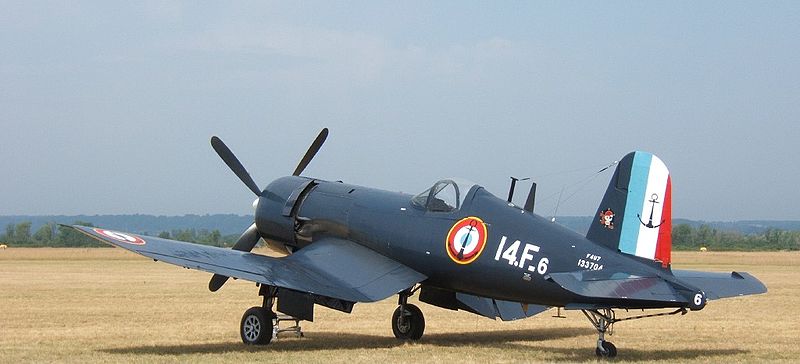 |
Chance Vought F4U-7 Corsair |
After the armistice, French aviators had three choices how to continue flying. Some joined the Free French Air Force to strengthen the resistance while others chose to fly for the Vichy French Air Force under German occupation. The Vichy Armée de l'Air operated French equipment, and was mainly in charge of protecting Vichy interests in the colonies. When American forces began their attack on Morocco in November 1942, the Vichy Air Force fought back briefly before surrendering. The Germans dissolved the Vichy French armed forces soon after this.
After France had surrendered, many French aviators joined the Free French Air Force, which continued the fight against the Germans with the Cross of Lorraine as their symbol. After the dissolution of Vichy French forces, the liberated Vichy units were united with Free French units to form the Fighting French Air Force, or the FAFC, which would continue the work of the Armée de l’Air. The FAFC formed several squadrons under US and RAF command, and they fought in North Africa operating American P-39 and P-40 as well as British Spitfire V fighters. Perhaps the most famous French pilot to serve in the Western theater was Pierre Clostermann, who first flew Spitfires with No. 341 Squadron, and towards the end of the war transferred to a Hawker Tempest unit. Clostermann was credited with a total of 33 victories.
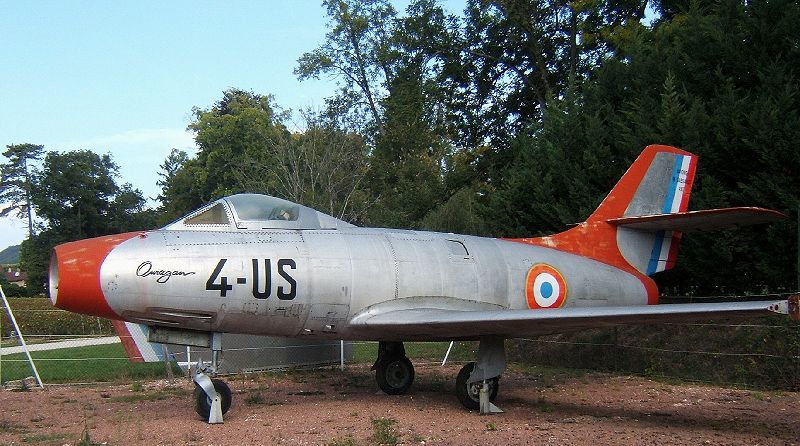 |
Dassault Ouragan |
Free French pilots also flew in the Eastern Front. A unit of French aviators joined Soviet forces in March 1943. First operating the Yak-1, then Yak-9Ds and eventually Yak-3s, the Normandie-Niemen achieved acclaim both from the French and the Soviets alike. As well as numerous unit honours, several pilots such as Marcel Albert and Roland de la Poype became Heroes of the Soviet Union. Grateful for their service, the USSR gifted the Yak-3s the unit had been operating to France.
After victory in Europe, France began rebuilding their air force. Initially using WW2 era aircraft such as P-63 Kingcobras and Fw 190s under the designation NC 900, they quickly advanced to operating first generation jets such as the de Havilland Vampire and their first indigenous jet fighter, the Dassault Ouragan.
However, propeller-powered fighters were not abandoned, as they were used in the attempt to maintain control of French colonies. In addition to the P-63s, a number of American F6F Hellcats, F8F Bearcats, and navy F4U-7 Corsairs were delivered to the French to fight in the First Indochina War from 1946 to 1954. The Hellcats and Corsairs operated under French Naval Aviation, the Aéronavale, which will soon receive a their roundel in War Thunder.
The War Thunder Team
